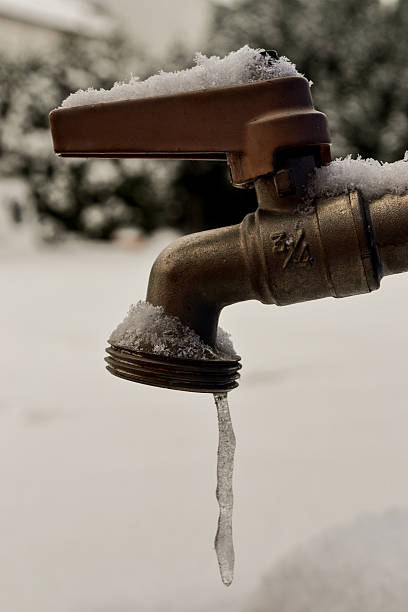Protecting Against Frozen Plumbing in Winter: Professional Advice
Protecting Against Frozen Plumbing in Winter: Professional Advice
Blog Article
We have noticed this post relating to Winter Plumbing Precautions: Preventing Frozen Pipes below on the internet and think it made good sense to write about it with you on this page.

Cold weather can wreak havoc on your plumbing, especially by freezing pipelines. Right here's exactly how to avoid it from occurring and what to do if it does.
Introduction
As temperatures drop, the risk of icy pipelines boosts, potentially leading to pricey fixings and water damages. Comprehending how to stop frozen pipes is critical for house owners in cold environments.
Comprehending Icy Pipes
What creates pipelines to ice up?
Pipes ice up when subjected to temperature levels listed below 32 ° F (0 ° C) for extended durations. As water inside the pipelines freezes, it expands, taxing the pipe wall surfaces and potentially triggering them to burst.
Dangers and problems
Icy pipes can bring about supply of water disturbances, home damages, and pricey fixings. Burst pipes can flooding homes and create comprehensive architectural damages.
Indicators of Frozen Pipes
Determining icy pipelines early can stop them from rupturing.
Just how to recognize icy pipelines
Look for decreased water flow from faucets, unusual odors or noises from pipes, and noticeable frost on revealed pipelines.
Avoidance Tips
Shielding at risk pipelines
Wrap pipelines in insulation sleeves or make use of warm tape to protect them from freezing temperatures. Focus on pipelines in unheated or exterior locations of the home.
Home heating methods
Keep interior rooms effectively heated up, particularly areas with pipes. Open up cabinet doors to permit warm air to distribute around pipes under sinks.
Safeguarding Outdoor Plumbing
Yard hoses and outside taps
Separate and drain garden pipes prior to winter. Set up frost-proof faucets or cover exterior taps with shielded caps.
What to Do If Your Pipes Freeze
Immediate actions to take
If you think icy pipelines, maintain taps open to eliminate stress as the ice thaws. Use a hairdryer or towels soaked in hot water to thaw pipes slowly.
Long-Term Solutions
Structural modifications
Consider rerouting pipelines away from outside wall surfaces or unheated locations. Include added insulation to attic rooms, cellars, and crawl spaces.
Updating insulation
Buy top quality insulation for pipes, attics, and wall surfaces. Correct insulation aids keep constant temperatures and decreases the risk of frozen pipelines.
Conclusion
Avoiding frozen pipelines needs proactive measures and fast actions. By understanding the causes, indicators, and preventive measures, house owners can shield their plumbing throughout winter.
5 Ways to Prevent Frozen Pipes
Drain Outdoor Faucets and Disconnect Hoses
First, close the shut-off valve that controls the flow of water in the pipe to your outdoor faucet. Then, head outside to disconnect and drain your hose and open the outdoor faucet to allow the water to completely drain out of the line. Turn off the faucet when done. Finally, head back to the shut-off valve and drain the remaining water inside the pipe into a bucket or container. Additionally, if you have a home irrigation system, you should consider hiring an expert to clear the system of water each year.
Insulate Pipes
One of the best and most cost-effective methods for preventing frozen water pipes is to wrap your pipes with insulation. This is especially important for areas in your home that aren’t exposed to heat, such as an attic. We suggest using foam sleeves, which can typically be found at your local hardware store.
Keep Heat Running at 65
Your pipes are located inside your walls, and the temperature there is much colder than the rest of the house. To prevent your pipes from freezing, The Insurance Information Institute suggests that you keep your home heated to at least 65 degrees, even when traveling. You may want to invest in smart devices that can keep an eye on the temperature in your home while you’re away.
Leave Water Dripping
Moving water — even a small trickle — can prevent ice from forming inside your pipes. When freezing temps are imminent, start a drip of water from all faucets that serve exposed pipes. Leaving a few faucets running will also help relieve pressure inside the pipes and help prevent a rupture if the water inside freezes.
Open Cupboard Doors
Warm your kitchen and bathroom pipes by opening cupboards and vanities. You should also leave your interior doors ajar to help warm air circulate evenly throughout your home.

I stumbled upon that write up about Helpful Tips to Prevent Frozen Pipes this Winter while doing a lookup on the internet. Please take the time to promote this blog post if you enjoyed it. I praise you for being here. Please check our website back soon.
Detail Report this page